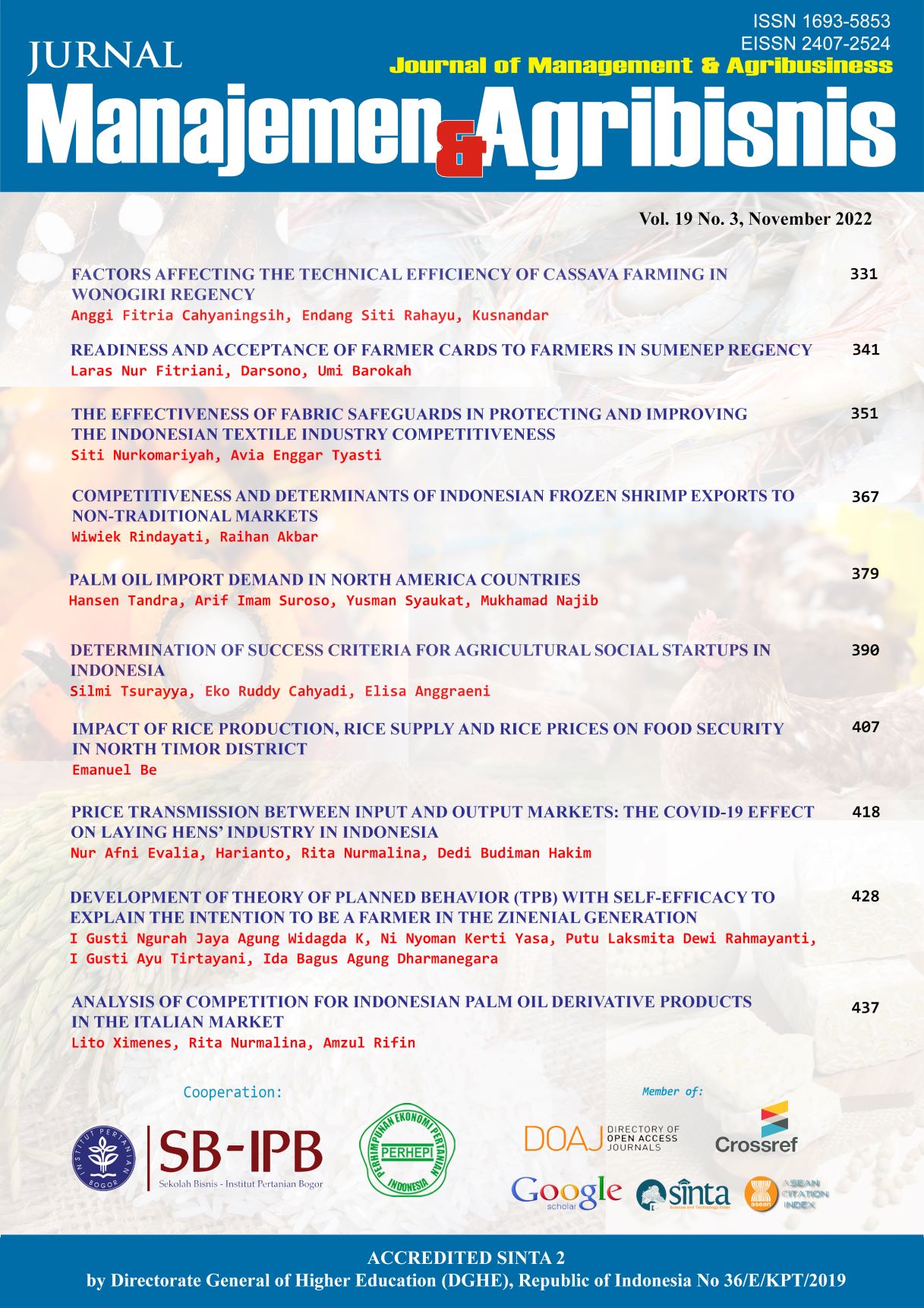Readiness and Acceptance of Farmer Cards to Farmers in Sumenep Regency
Abstract
The Farmer’s Card becomes one of the requirements to get the subsidized fertilizer as a tool of access to banking services integrated into an E-wallet or ATM (Automatic Teller Machine). The new technology indicates the problem found in the field, which is the lack of awareness and knowledge of the farmers who own the Farmer’s Card in understanding the function of each feature provided by the Card. This research is conducted to analyze the readiness and the acceptance factors of the farmers who own the Farmer’s Card toward the interest of using the Farmer’s Card in the Sumenep Regency. The Technology Readiness and Acceptance Model (TRAM), which is the collaboration of the Technology Readiness Index (TRI) and Technology Acceptance Model (TAM), is being used to analyze the interest in the use of the Farmer’s Card. Quantitative data is collected through interviews with structured questionnaires that refer to the previous research indicators on the Technology Readiness and Acceptance Model (TRAM). The sample was conducted on 140 farmers who own the Farmer’s Card. The analysis was performed using Partial Least Squares-Structural Equation Modeling (PLS-SEM) through the SmartPLS software. The results of the hypothesis show that the function or the advantage of the Farmer’s Card has a direct and significant influence on the interest of the farmers in using the Farmer’s Card. On the other hand, the simplicity of using the Farmer’s Card is considered insignificant and challenging for the farmers. The Farmer’s Card program can be successful. It is suggested that the government and the farmers, who own the Farmer’s Card, need to approach and improve their communication through intensive guidance.
Keywords: readiness, acceptance, farmer's card, PLS-SEM, subsidized fertilizer
Authors
Authors who publish with this journal agree to the following terms:
- Authors retain copyright and grant the journal right of first publication with the work simultaneously licensed under a Creative Commons Attribution License that allows others to share the work with an acknowledgement of the work's authorship and initial publication in this journal.
- Authors are able to enter into separate, additional contractual arrangements for the non-exclusive distribution of the journal's published version of the work (e.g., post it to an institutional repository or publish it in a book), with an acknowledgement of its initial publication in this journal.
- Authors are permitted and encouraged to post their work online (e.g., in institutional repositories or on their website) prior to and during the submission process, as it can lead to productive exchanges, as well as earlier and greater citation of published work (See The Effect of Open Access).

